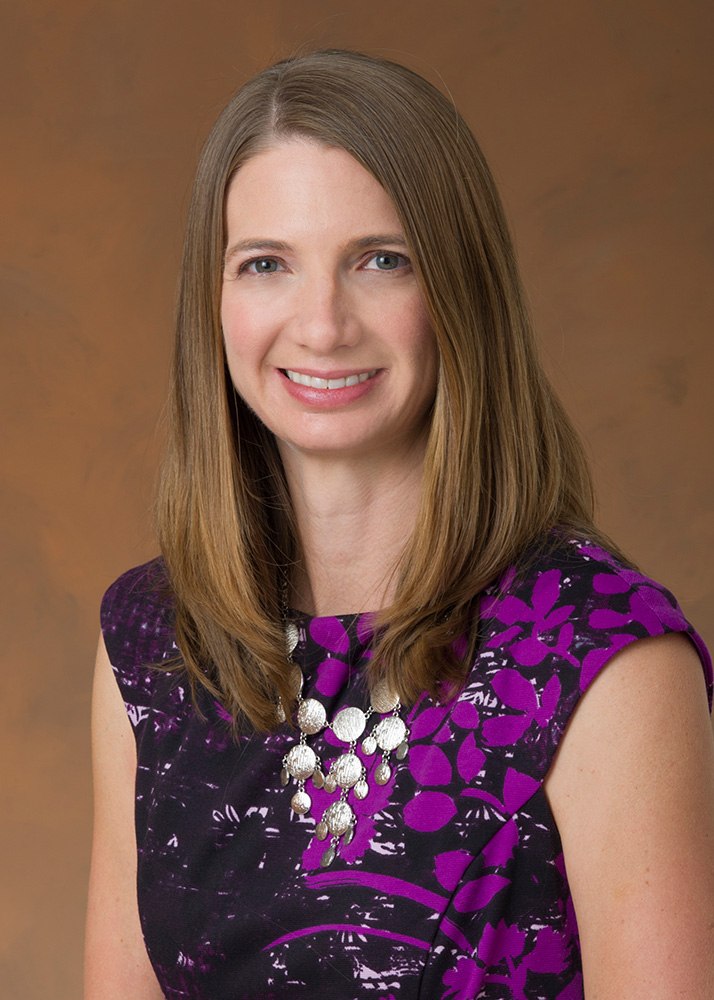Melissa A. Jones, PhD
Assistant Section Manager, Spacecraft Mechanical Engineering
melissa.a.jones@jpl.nasa.gov
Office: 818-393-3110
Biography
Dr. Jones obtained her B.S. in Chemistry from Loras College in 2002. Her thesis research focused on simulating surface features on asteroids using regolith fludization techniques on NASA’s microgravity plane. She went on to pursue her Ph.D (2006) at the University of Arkansas where her graduate work focused on studying chemical and physical surface processes on asteroids as well as designing and environmentally testing a sample collector for a proposed near-Earth asteroid sample return mission, which was a collaboration with JPL. Her multipdisciplanary dissertation had a strong science and engineering interface which she ultimately decided to pursue as a career path. Dr. Jones started her career at JPL in 2006 where she spent the first 7 years pursuing opportunities to learn systems engineering. In 2013, she become the Biotechnology and Planetary Protection Group Supervisor, a group where both science and engineering have to meet to get the job done correctly.
Research Interests
Current research interests include biotechnology and research endeavors that are applicable to planetary protection, particularly applications to flight project work. This would include cleaning and sterilization technologies, molecular and bioassay methods, environmental monitoring techniques, aceptic techniques, studying extremophiles and extreme environments, and bioinformatics. These are all areas that the Biotechnology and Planetary Protection group is working to stay on the cutting edge in to ensure we can do our jobs protecting other worlds from terrestrial contamination but keeping science integrity.
Professional Experience
Dr. Jones started her career at JPL in 2006 after graduate school working as a study lead, proposal manager or systems engineer on various lunar, planetary, and small body studies and proposals. Additionally, she supported the systems engineering chairs in Team X. In 2008, she served as the proposal manager for the Titan Saturn System Mission Outer Planets Flagship study. Subsequently, in 2009, she joined the Jupiter Europa Orbiter team (now Europa Clipper) as a systems engineer performing trade studies and tool development. She went on to join the MSL systems engineering team in 2011 working to document and close test items prior to launch and landing. In addition, she worked on the MSL Sample Analysis at Mars (SAM) team performing flight software testing. In 2013, after briefly working as a systems engineer on the Asteroid Retdirect Mission study, she had the opportunity to become the Biotechnology and Planetary Protection Group Supervisor.
Education
Ph.D. Space and Planetary Sciences, University of Arkansas, 2006.
B.S. Chemistry, Loras College, 2002
Selected Awards
JPL People Leadership Award – Sept 2015 - For exceptional leadership in Biotechnology and Planetary Protection resulting in a highly motivated team of technical contributors.
JPL Mariner Award – Aug 2014 - Exceptional support of the SAM Verification and Validation team in preparation for Curiosity's landing on Mars.
JPL Mariner Award – Aug 2014 - For outstanding efforts in supporting the MEPAG- and COSPAR-requested 2013-14 Special Regions Science Analysis Group.
NASA Honors Award – MSL Surface Sampling and Science Systems Team – July 2013 - For exceptional performance in the face of significant challenges, from design and development through testing and operations of the sampling system.
NASA Honors Award - MSL System Engineering Management Team – July 2013 - For the outstanding management of the system design, verification and validation of MSL, leading to the successful landing and surface operations
Selected Publications
Azouggagh-McBride, S., et al. "A sample collector for robotic sample return missions III: Impact survivability studies." Advances in Space Research 42.1 (2008): 29-33.
Franzen, M. A., et al. "A sample collector for robotic sample return missions I: Temperature effect on collected mass." Advances in Space Research 42.1 (2008): 20-24.
Franzen, M. A., et al. "Size and density sorting of metal and silicate grains under microgravity conditions and the origin of chondrites." Geophysical research letters 30.14 (2003).
Jones, Melissa A., and James P. Chase. "Conceptual Design Methods and the Application of a Tradespace Modeling Tool for Deep Space Missions."Aerospace Conference, 2008 IEEE. IEEE, 2008.
Jones, Melissa A., et al. "Next generation Autonomous Lunar Geophysical Experiment Package." 2009 IEEE Aerospace conference. IEEE, 2009.
Jones, Melissa A., John O. Elliott, and Leon Alkalai. "Systems engineering approach and design trades for the Lunette geophysical network lander."Aerospace Conference, 2010 IEEE. IEEE, 2010.
Moore, S. R., et al. "The origin of chondrites: Metal‐silicate separation experiments under microgravity conditions‐II." Geophysical research letters30.10 (2003).
Rummel, John D., et al. "A new analysis of Mars “special regions”: findings of the second MEPAG Special Regions Science Analysis Group (SR-SAG2)."Astrobiology 14.11 (2014): 887-968.
Sears, Derek, et al. "Mission operations in low-gravity regolith and dust."Mitigation of Hazardous Comets and Asteroids (2004): 337-352.
Sears, Derek, et al. "The Hera mission: multiple near-earth asteroid sample return." Advances in space research 34.11 (2004): 2270-2275.
Venechuk, E., et al. "A sample collector for robotic sample return missions II: Radiation tests." Advances in Space Research 42.1 (2008): 25-28.
